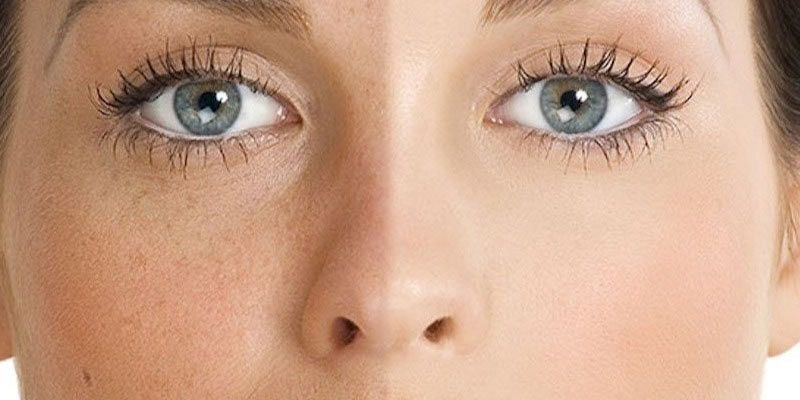Zinc oxide has many naturally occurring and synthetically generated skincare and sun defense uses. One of its main applications is as an FDA-approved sunscreen.
Sunscreen with zinc oxide is a mineral-based sunscreen that reflects light off the skin like a mirror. It's sometimes micronized into tiny particles, making sunblock transparent when applied. You may have seen white zinc oxide in Sunscreens that include transparent zinc oxide.This regular zinc oxide can whiten skin. However, fine zinc oxide particles resemble sea sponges. Because they reflect less light, these little objects don't make your face whiter.
Transparent zinc oxide is safe and effective at sun protection. This doesn't harm you or the environment. Additionally, it effectively blocks UVA and UVB radiation from the sun. Clear zinc oxide sunscreen may be the best approach to avoid the sun without looking ghostly. It's safe, effective, and won't turn you ghostly.
Pros of Using Zinc Oxide Sunscreen
Protection From UVA and UVB
Zinc oxide fights UVA and UVB radiation, making it a popular component. Its broad coverage sets it apart from other sunscreen components. UVA radiation can penetrate the skin and accelerate aging and skin cancer. However, UVB rays produce sunburn. Zinc oxide sunscreen shields the skin from all UV radiation. This makes it ideal for those seeking excellent UV protection and long-term skin health.
Photostability
The fact that zinc oxide works in sunshine is crucial. Over time, UV-degradable sunscreens may stop protecting your skin. Sunscreen with zinc oxide, however, protects after prolonged sun exposure. Keeping your skin protected all day is one of its finest features. Your zinc oxide sunscreen will protect you from the sun's harmful rays at the beach, walking, or enjoying your regular life. It becomes more trustworthy.
Minimal Allergenic Potential
Zinc oxide is considered non-comedogenic, making it less likely to clog pores and cause skin irritation or breakouts, making it suitable for sensitive skin.
Cons of Using Zinc Oxide Sunscreen

Cosmetic Appearance
One of the primary issues with regular zinc oxide sunscreens is that they leave a white or chalky coating on the skin. Due to the white film's look, there has been some controversy.
Non-micronized zinc oxide has larger particles that reflect light, causing the "white cast" effect. This suggests that the cream protects against the sun well, but it has raised concerns regarding its appearance and suitability for diverse skin tones. Several companies now offer transparent zinc oxide sunscreens to address this concern, which reduces the chances of zinc oxide falling under the category of sunscreen ingredients to avoid.
Texture
Zinc oxide sunscreen may be thicker than chemical ones. This thickness variation affects product use, and it's a personal preference. Some may find it more challenging to spread the thicker consistency, which covers more. Remember that zinc oxide sunscreens' textures vary depending on how they're created. Many modern products spread more quickly, improving the application.
Less Water Resistance
Although sunscreen with zinc oxide works well, chemical sunscreen components may be less water-resistant. Swimming and water sports enthusiasts need this characteristic. Water-resistant chemical sunscreens are superior for long-lasting UV protection while conducting aquatic activities. Note that certain zinc oxide sunscreens are water-resistant. Read product labels to determine your ideal water resistance.
Is Clear Zinc Oxide Nanomaterial or Not?
Transparent zinc oxide sunscreen is unusual and may be nano or non-nano. The first shot shows 500–9000 nanometer particles, far more significant than nanoparticles. The lower shot shows zinc oxide crystallites in these more essential pieces. Importantly, light scattering indicated no unattached nanoparticles.
Because nano has numerous meanings, transparent zinc oxide is not designated nano, even though most assume it is not. According to the EU, nanoscale crystallites inside bigger particles make transparent zinc oxide a nanomaterial. The absence of nanoparticles makes transparent zinc oxide harmless.
Unique transparent zinc oxide sunscreen is safe and effective. Although particle size and categorization vary by use, its nanoparticle-free nature makes it safe and effective. Broad-spectrum UV protection without chemicals or skin irritation from transparent zinc oxide. This sunscreen component filters UVA and UVB rays, doesn't break down in sunshine, and covers a wide range. They're thicker, leave a white or chalky film, and don't repel water like chemical sunscreens, making them less desirable. Transparent zinc oxide is a flexible and safe sunscreen.
Who Benefits Most From Zinc Oxide Sunscreen?
Zinc oxide sunscreen is suitable for many people. This sun protection suits these people with these conditions:
- Zinc oxide sunscreen is ideal for delicate skin. It soothes sensitive skin and protects it from the sun by reducing irritation.
- Zinc oxide protection is very beneficial. It protects gently yet efficiently, preventing rosacea flare-ups.
- Zinc oxide's anti-inflammatory properties help acne-prone skin. This protects the skin from the sun and may reduce acne redness.
- Sunscreen with zinc oxide helps melasma sufferers. It protects the face from UV, visible, and infrared radiation without overheating, which can worsen pigmentation.
Correct Zinc Oxide Sunscreen Use

To maximize zinc oxide sunscreen use, remember these:
Reapply
Apply again if needed—If your sunscreen doesn't wash off in water, reapply it every 40–60 minutes as recommended on the label.
Don't delay sunscreen application. Zinc oxide sunscreen is best used before going outside. Use zinc oxide before you need it since it protects rapidly.
Choose Authentic Formulations
Transparent zinc oxide sunscreens are easy to work with and tinted. Some can be used as makeup primers to protect skin from the sun and seem more put-together.
Don't Ignore Less Visible Areas Use sunscreen on your hands, neck, and chest—easy to forget. Even a little sun exposure can increase cancer risk and harm your skin.
Use the Right Amount
Cover your body with an ounce of zinc oxide sunscreen, roughly the size of a shot glass, to protect it from the sun. Many individuals don't wear enough sunscreen, so apply plenty for protection.
Zinc oxide sunscreen offers several advantages and works well on various skin types, making it an excellent choice for sun protection and skin health.




